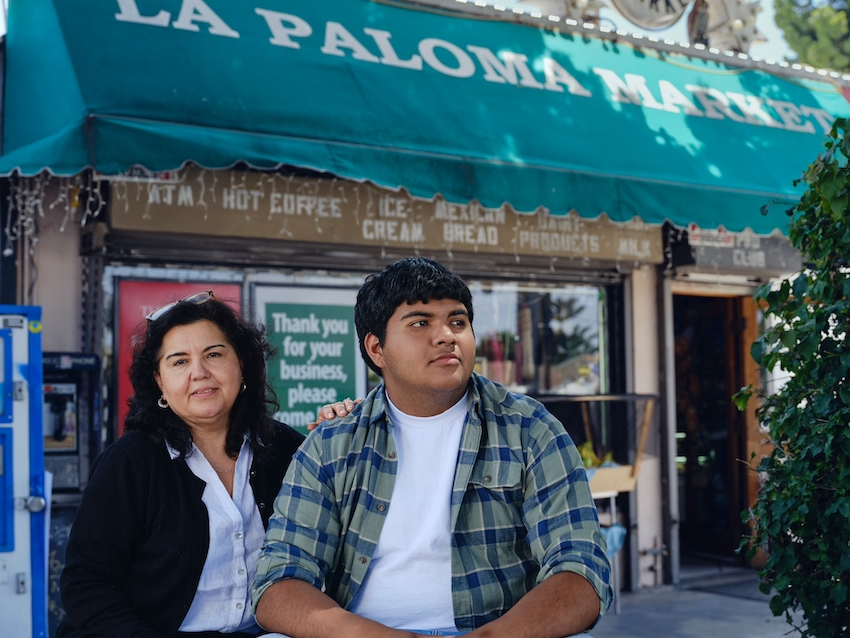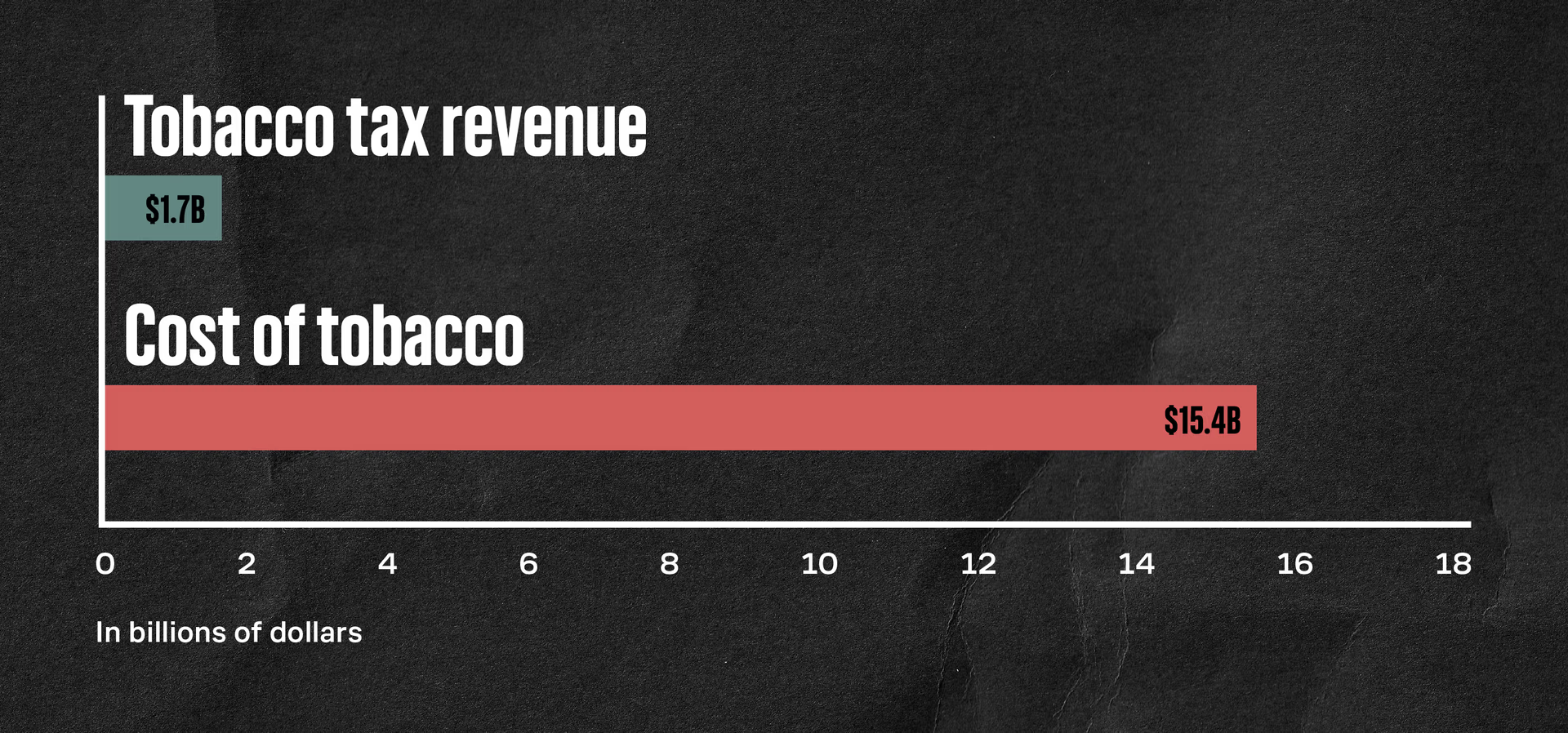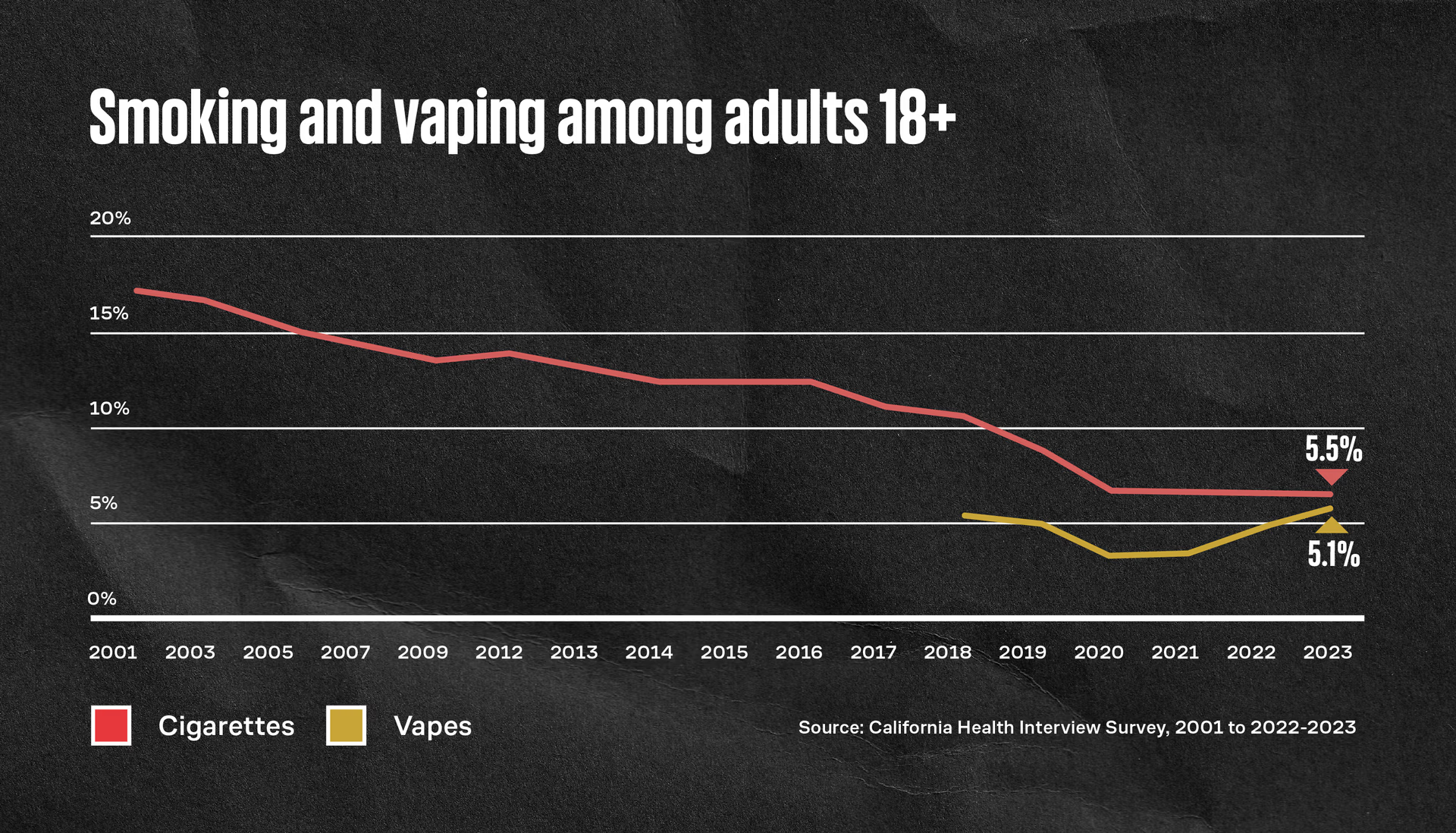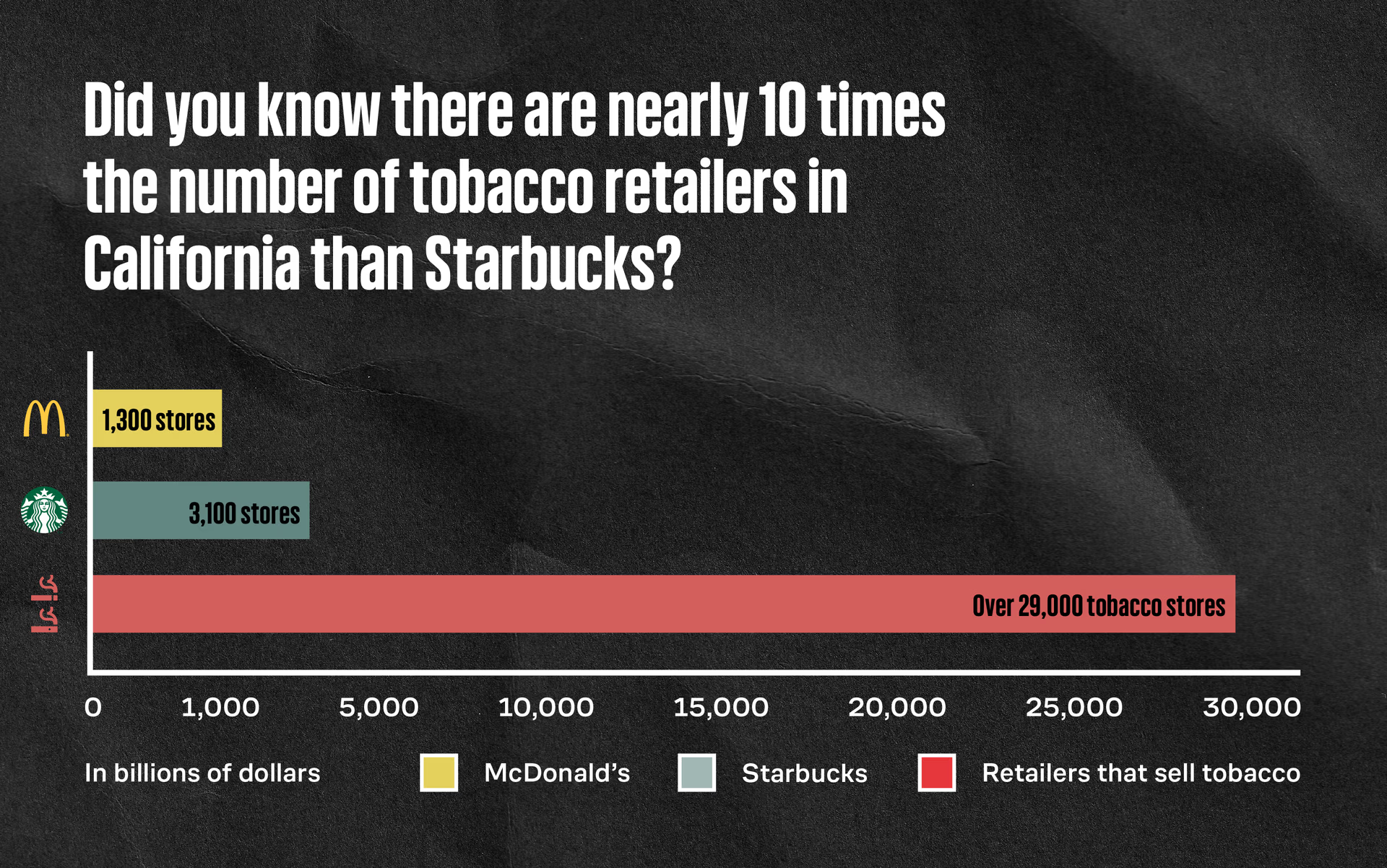In this article
Ending Big Tobacco’s epidemic is not just good for our health – it’s also good for California’s economy. Despite Big Tobacco’s claims that businesses and communities need their products to benefit financially, research has shown that these claims are nothing more than the industry’s continued manipulation to profit at the expense of Californians’ health.12
The reality is a California economy without Big Tobacco isn’t just possible – it’s already happening.34 Two California communities have already ended the sale of tobacco products.34 And California was the second state in the US to put an end to retailers selling dangerous flavored tobacco products, including menthol cigarettes and flavored vapes.5 The result for California? A 41 percent decline in total vape sales and a 16 percent decrease in total cigarette sales in 2023.67
Will ending Big Tobacco’s epidemic hurt the economy?
No. In fact, Big Tobacco’s products carry a hefty price tag for all Californians – from the addiction and diseases they cause,8 to the premature deaths of far too many loved ones – it affects our communities and families in many costly and profound ways.
A study found tobacco-related healthcare costs for California was $15.4 billion annually.9 That means each Californian pays nearly $400 each year for the cost of smoking – whether you use tobacco or not.9
Compare that to California’s tobacco tax revenue. In fiscal year 2022-23, California tobacco tax revenue was approximately $1.7 billion.10
It’s easy to see the cost of tobacco far outweighs any tax revenue generated.
How does ending Big Tobacco’s epidemic impact tobacco tax-funded programs?
Tobacco tax revenue is directly related to the number of tobacco products sold, so as tobacco use in California falls, so does the tax revenue generated from those product sales. California’s tobacco tax revenue has been falling as tobacco use has been declining.101112 Less tobacco revenue means less resources for tax-funded organizations like First 5 California who are already anticipating the need to change their funding source to more sustainable ones in order to keep their critical services for Californians in place.1314
Does ending Big Tobacco’s epidemic put retailers out of business?
Despite a tobacco industry-created myth, research shows that tobacco products are not essential for retail store survival.15 In fact, cigarettes have the lowest profit margin for convenience stores, and tobacco revenue for retailers only accounts for a small portion of overall sales.1617
In states that have banned the sale of flavored tobacco products, data shows no significant reduction in the number of retail stores, no significant decrease in employees at these stores, and no significant reduction in wages.16
There are over 29,000 retailers that sell tobacco in California – far more than Starbucks or McDonald’s.121819 In fact, there are nearly 10 times the amount of tobacco retailers than there are Starbucks in the state.1219 With those kinds of numbers, retailers can make a huge impact by choosing their neighbors’ health over tobacco profit.
Are there businesses that have succeeded without selling tobacco?
Yes. Some retailers are proactively choosing to stop selling tobacco products all together, transitioning to other consumer goods and food items that generate more income over time.2021 There have been examples of local business organizations, government agencies, and community-based organizations supporting retailers in their transition away from tobacco, putting their community’s health over Big Tobacco’s profits.2223
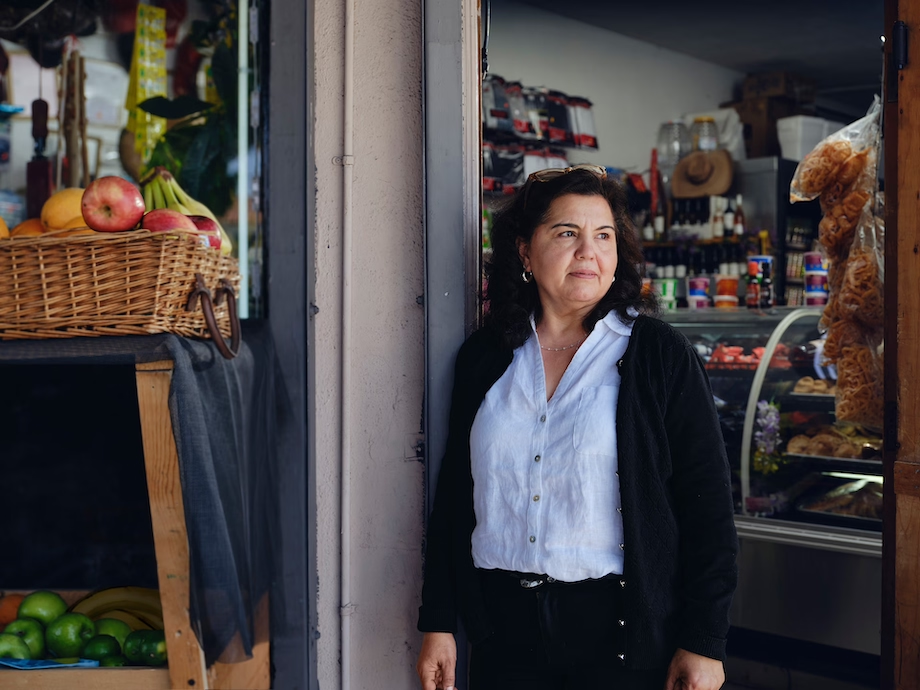
“I don't sell vapes. No profit is worth that ugliness.”
A convenience store owner protects her family and her neighborhood by not selling vapes.
Four Corners Market, located in the city of Alturas, a community of just 2,715 in Modoc County, California, hasn’t sold tobacco products in more than 35 years.23 A family business since 1987, the key to their success is investing in prepared, ready-to-eat meals, fresh produce, and foods that are easily purchased with EBT.
Owner Bill Hall says they haven’t sold tobacco products since 1989, and even though “the market is 1,100 square feet with only two checkers, sales have consistently increased,” reaching around $3.5 million each year. Building a loyal customer base and creating a family friendly experience without tobacco products, while making sure customers can find the items they want, has helped Four Corners Market thrive.23
Does ending Big Tobacco’s epidemic create an illicit market for tobacco products?
The tobacco industry talks a lot about the threat of an illicit market to undermine public health efforts. Tobacco companies exaggerate illicit market size estimates and place the blame on tobacco prevention policies. In reality, the challenge of an illicit market is almost always much smaller than Big Tobacco claims it is.24 Tobacco companies are also often complicit in the illicit market about which they complain.2425
When considering a hypothetical illicit tobacco market, we must balance what’s assumed against the reality. The reality is the devastation that tobacco has wreaked on our families and communities far outweighs a hypothetical threat of an illicit tobacco market. This is why it is not considered a reasonable argument against protecting people’s health.26
What has been done so far to reduce the cost burden of Big Tobacco’s epidemic in California?
Because tobacco impacts all of us, not just people the tobacco industry addicts, California’s leadership demonstrates that a comprehensive approach – community engagement, addiction interventions, research, and bold public education campaigns – designed to change social norms around tobacco is necessary and has a much greater impact than focusing solely on helping people who are addicted to tobacco quit.27
Over one million lives have been saved since the beginning of the UNDO program.28293031 Today, California has the lowest youth vaping rate in the US, and the adult smoking rate in California has decreased by more than 60 percent over the past three decades, ranking the state the third lowest in the US.1232
Since UNDO’s beginning, we have saved taxpayers a staggering $500 billion in healthcare costs – and, what’s more, for every dollar California spent on tobacco control and prevention, healthcare costs fell by $231.33
It’s not only possible to succeed without tobacco product sales, while still maintaining and promoting a vibrant business community and economy – it’s already happening.34
